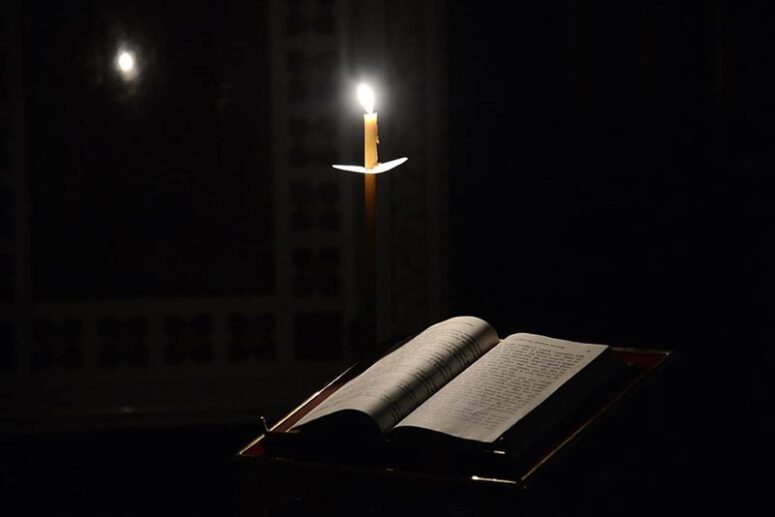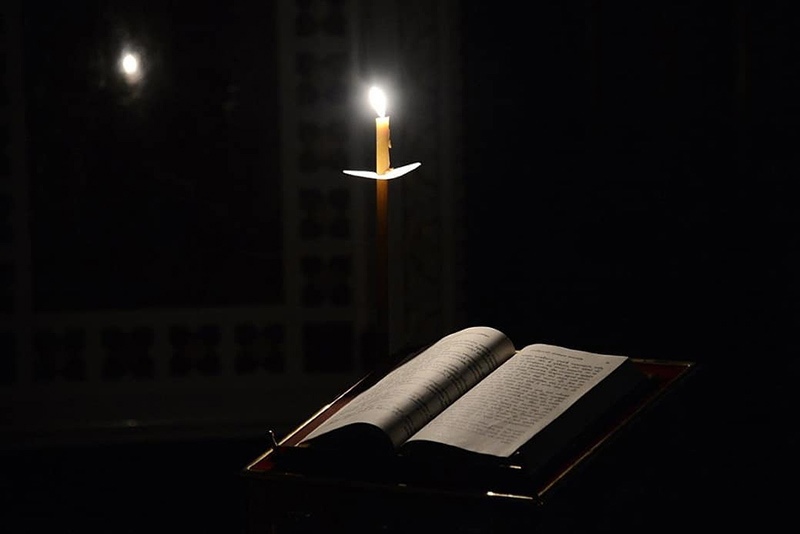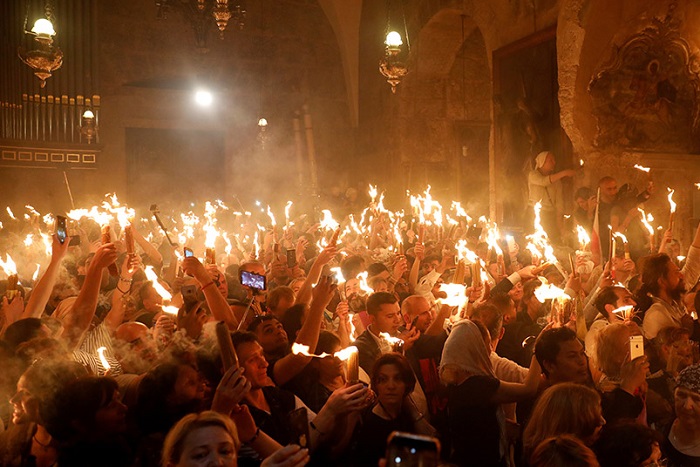
Some editions of the Psalter and prayer books for priests contain an unusual order, not mentioned in the Typicon. You will not find it in the divine service, and the number of people practicing it in private prayer is probably also quite low. This article is about the “rule of the twelve psalms.” What is this order and where does it come from? Where was it originally practised and why is it important?
The Forgotten Daily Cycle
In modern practice, the rule of the 12 psalms is not part of the daily or any other cycles of worship; however, it is still used by Christians (particularly by monastics) with zealous attitude to prayer. Despite its current role as a private prayer rule, the primary purpose of this rite was part of the ancient liturgical cycle of psalms read during the 12 hours of the night. This night cycle was included in the existing system of the daily circle, consisting of 24 services, one for every hour. We know very little about the worship of that time, except that it was quite different from the modern Rule, universally accepted by the Orthodox Church and based on the 7 hours (9 with the Midnight Office and the Typical Psalms) of the Palestinian Book of Hours. It is that completely different liturgical system that the rule of the 12 psalms originates from, which is why it is not present in modern worship.
The Egyptian Monastic Tradition
12 daytime and the same number of nighttime psalms are first described in the Codex Alexandrinus (Fol. 532v), an ancient manuscript of the 5th century, where 3 psalms for evening and morning services were indicated separately, giving, in fact, a brief outline of the services of one of the most ancient horologia. Chronologically, the next evidence of the Egyptian Book of Hours is a fragment of the late 6th century papyrus (P. Naqlun inv. 72/8), containing only the numbers of the daytime psalms, almost identical to those of the Alexandrian Codex. There is an assumption (Frøyshov. 2003. P. 555) that these Egyptian documents describe the liturgical circle of 24 services performed by Egyptian monks of the 4th century. It is also known as “the Rule of St Pachomius, forwarded to him by a holy angel.” This Angelic Rule is mentioned in the famous work by Palladius of Galatia (Lavsaik, ch. 32), as well as in the writings of St John Cassian the Roman (De inst. Coenob. II 4-6; III 2). Each service consisted of a psalm and a prayer , reflecting the ancient norm to “seal” an Old Testament psalm with a New Testament prayer. In some manuscripts of the Psalter, one can find the daily service of the 24 psalms as an appendix to the kathisma (see: Diakovsky. 1913, p. 176), while in some other manuscripts it is incorporated into the daily cycle of worship (for example, in the 9t century Sinait Book of Hours (gr. 864) this rite comes immediately after the 9th hour.
Venerable John Cassian on the Night Reading of the 12 Psalms
According to the testimony of St John Cassian the Roman (+ 435), the 12 psalms are read during the evening and night Gatherings throughout Egypt and Thebais, with the addition of 2 readings from the Old and New Testaments. This rule was observed in all monasteries, since, according to the legend of the elders, it was not established by people, but revealed to the fathers by an angel (Scripture. Book II. On the rules of Night Prayer and Psalmody. Ch. 4). St John describes an incident when the Desert Fathers gathered together to decide how many psalms should be read in each monastery. The dispute became stalled, with some suggesting that 50 psalms should be read, some insisting on 60 and others giving their own reasons. It was time for the evening worship when one of the elders came into the middle and began to sing psalms. After reading the 12th psalm and Alleluia, he suddenly disappeared, thus putting an end to the dispute, for everyone understood that he was an angel (Ibid. Ch. 5).
The Structure of the Rule
What does the modern version of the Twelve Psalms Rule look like? The order begins with the usual priestly / laity exclamation, followed by the standard usual beginning after which the reading of the psalms begins. After each three psalms, the Trisagion through “Our Father…” and the repentant troparia to the Lord and the Theotokos are read, concluded by Lord have mercy read thirty times. Next comes “Come and let us bow down” (three times) and the following three psalms. The final reading consists of Psalm 102, the prayer of King Manasseh and the Great Doxology, after which the prayer of St Eustratius is read. The rule is concluded with the final Trisagion through “Our Father…”, the troparia, Lord have mercy (30 times) and the dismissal.
What is the significance of this rite in the life of modern Christians? First of all, reading it allows one to join the lex orandi (prayer law) of the ancient church, opening slightly the door to the cradle of Orthodox monasticism in Egypt and Thebais. Not every parishioner is able to privately perform Matins and Vespers, due to the complexity of their structure, as well as the mere lack of time and service books (the latter, however, are freely available on the Internet). The daily reading of the same morning and evening prayers is prone to turning into a mere formality, while the rite of the 12 psalms is more diverse and saturated not only with biblical text, but also with beautiful hymnography. Also, according to the Old Russian tradition, the reading of this rite can replace Vespers and Matins for a layman unable to attend a church service.





This is a very good, informative discussion, however, what is missing is the actual details of which psalms in which order, along the troparia and prayers. I have looked elsewhere for these details and not found it. In one of the more complete descriptions, only 11 of psalms were listed. In another account, in Russian -which I don’t know – seemed to suggest that a number of different patterns had been used. Reviving the use of this rite could be very beneficial in the modern world where time and opportunity are in short supply and more than the most simple rule is a challenge.